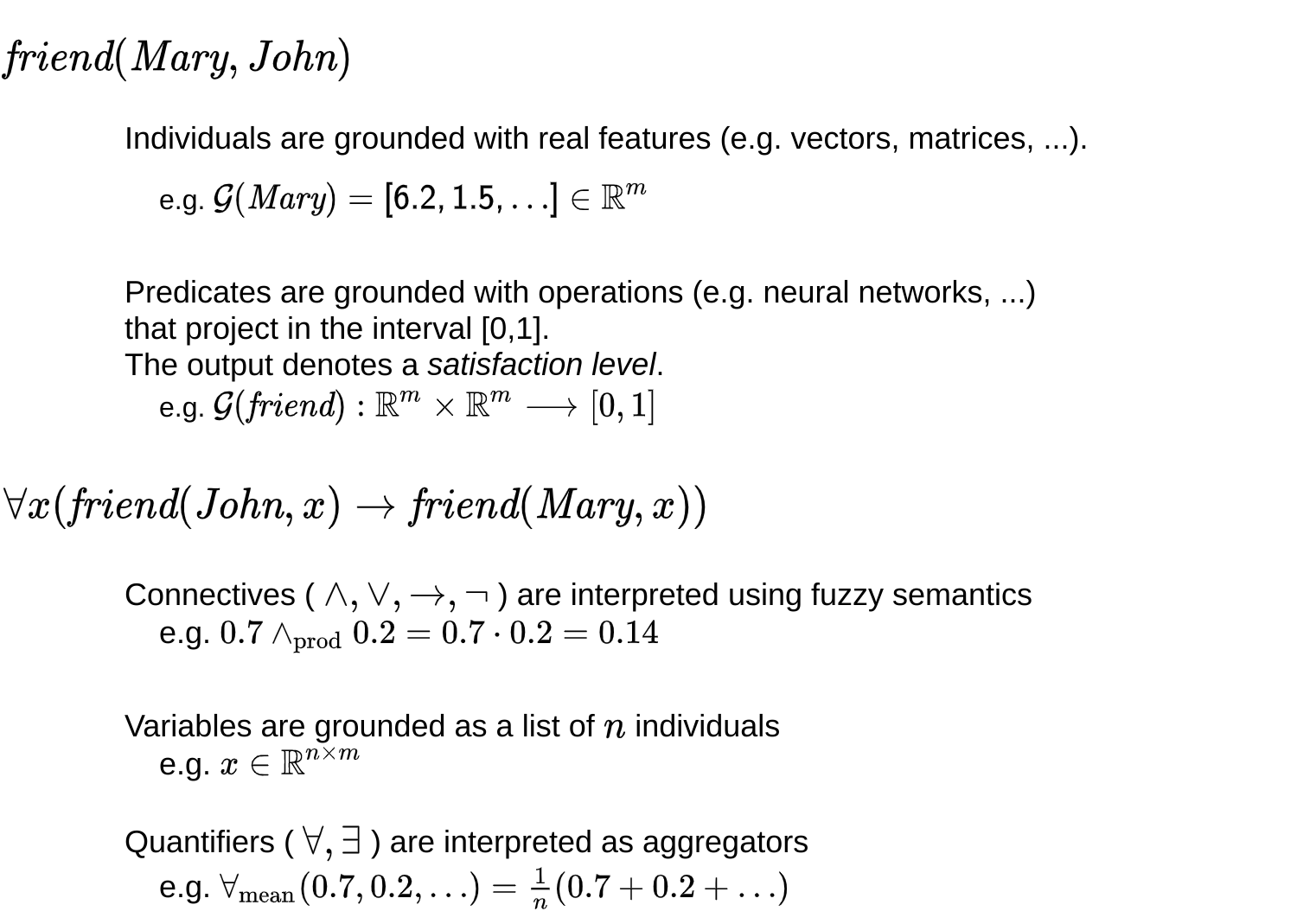Logic Tensor Networks
Artificial Intelligence agents are required to learn from their surroundings and to reason about the knowledge that has been learned in order to make decisions. While state-of-the-art learning from data typically uses sub-symbolic distributed representations, reasoning is normally useful at a higher level of abstraction with the use of a first-order logic language for knowledge representation. As a result, attempts at combining symbolic AI and neural computation into neural-symbolic systems have been on the increase. In this paper, we present Logic Tensor Networks (LTN), a neurosymbolic formalism and computational model that supports learning and reasoning through the introduction of a many-valued, end-to-end differentiable first-order logic called Real Logic as a representation language for deep learning. We show that LTN provides a uniform language for the specification and the computation of several AI tasks such as data clustering, multi-label classification, relational learning, query answering, semi-supervised learning, regression and embedding learning. We implement and illustrate each of the above tasks with a number of simple explanatory examples using TensorFlow 2. Keywords: Neurosymbolic AI, Deep Learning and Reasoning, Many-valued Logic.
PDF Abstract

